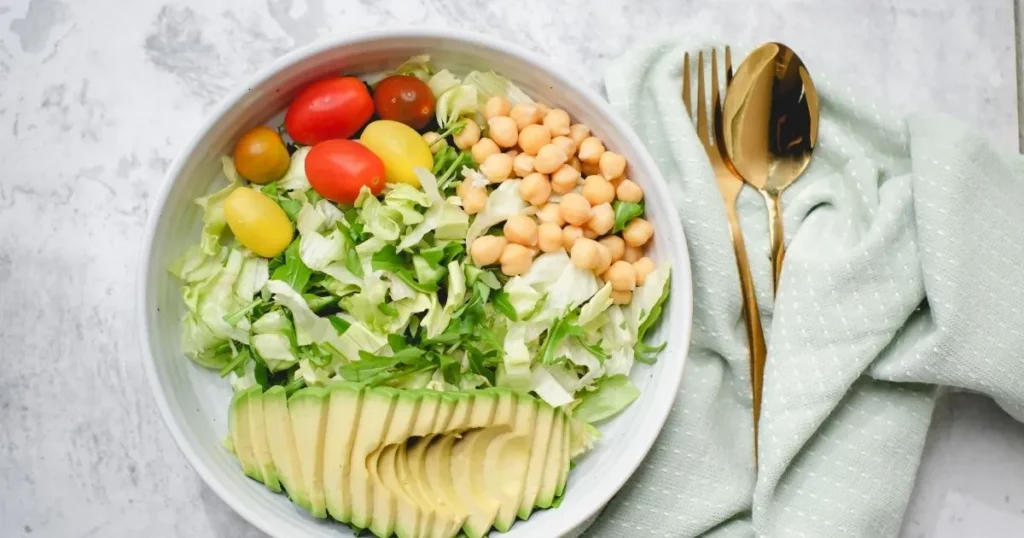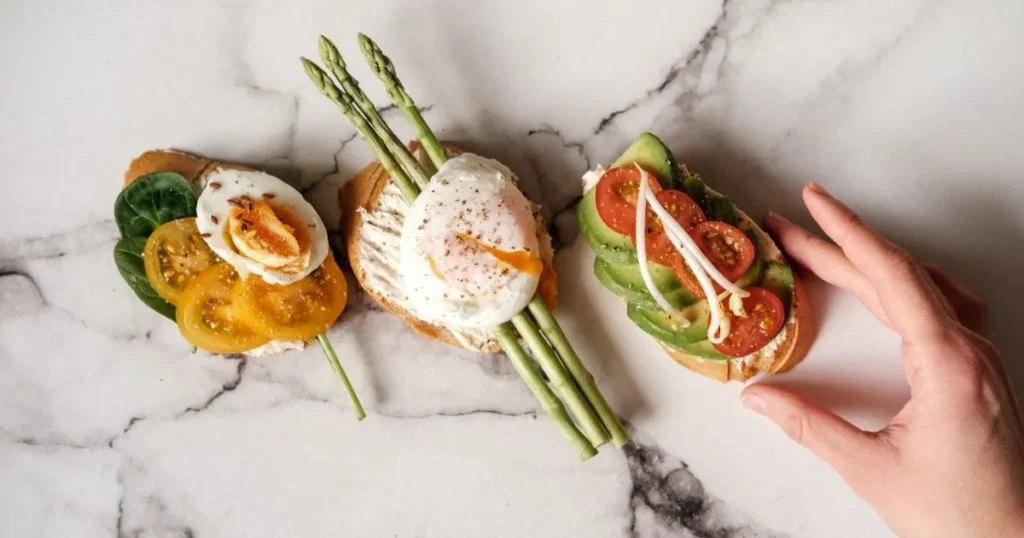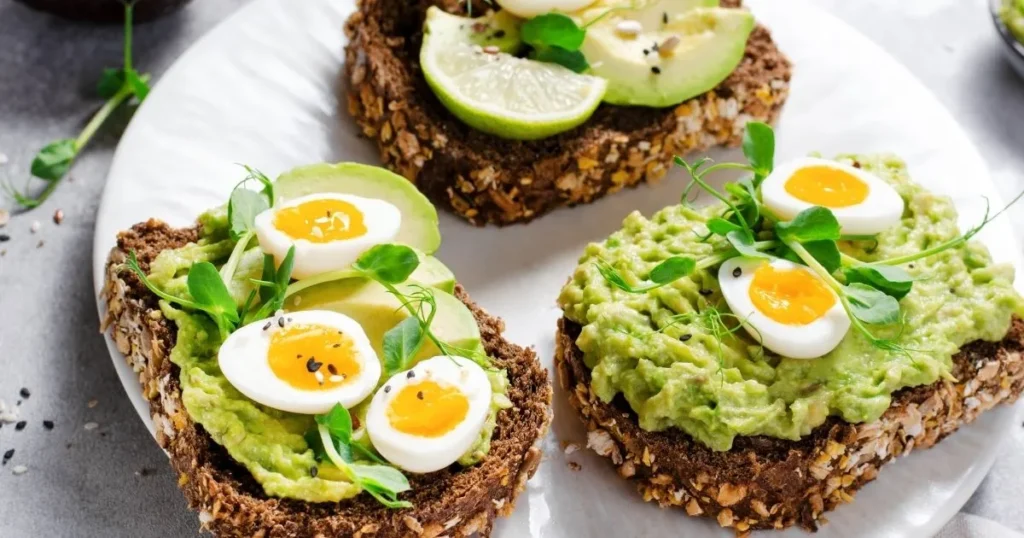Eating well is essential for feeling great. But, busy lives and too much nutrition advice can make it tough. This guide offers real ways to build lasting habits. You’ll learn how to make meal prep easier, pick foods that boost your energy, and beat common challenges.
A balanced diet is about making progress, not being perfect. By planning meals and understanding nutrients, you can care for your body easily. This article shows you how to turn good plans into lasting actions, making healthy eating both easy and fulfilling.

Table of Contents
Understanding the Fundamentals of a Balanced Diet
A balanced diet isn’t about strict rules. It’s about giving your body what it needs every day. Let’s explore the science behind the foods you eat. We’ll see how they work together to keep you healthy.

The Essential Nutrients Your Body Needs Daily
Your body runs on six key nutrients. Here’s their role in your health:
- Carbohydrates: Fuel for energy (think whole grains, fruits)
- Proteins: Muscle and tissue repair (chicken, beans)
- Fats: Support brain health (avocados, olive oil)
- Vitamins: Boost immunity (vitamin C in oranges, vitamin D in fortified milk)
- Minerals: Regulate bodily functions (calcium in yogurt, iron in spinach)
- Water: Hydrates every cell (aim for 8 cups daily)
Macronutrient Balance: Proteins, Carbs, and Fats
Macronutrients make up the bulk of your calories. The balance depends on your lifestyle:
- Carbohydrates: 45–65% of daily calories. Choose whole grains over refined sugars.
- Proteins: 10–35% of intake. Active people may need more (0.8g/kg of body weight).
- Fats: 20–35% of calories. Prioritize unsaturated fats like salmon and nuts.
Myth alert: Balance diet choices vary. Even athletes need fats—they’re not “bad” if consumed mindfully.
Micronutrients: Vitamins and Minerals That Matter
Even small deficiencies matter. Over 40% of Americans lack vitamin D, per CDC data. Prioritize these:
“Micronutrients are the unsung heroes of a balanced diet. They keep your heart, bones, and nerves working.” – Academy of Nutrition and Dietetics
- Vitamin D: Sunlight + fortified foods
- Magnesium: Spinach, almonds
- Potassium: Bananas, sweet potatoes
Focus on colorful veggies and whole foods to naturally cover most needs. No supplements needed if you eat varied meals!
Creating Your Perfect Balanced Meal Plate
Building a balanced meal plate is easy. No need for scales or apps. Just use your plate and follow some simple rules. A balanced diet is all about the right mix of foods. Let’s make mealtime simple and effective.
The Half-Plate Vegetable Rule
Vegetables should be the main attraction. Fill half your plate with veggies like leafy greens and broccoli. They’re full of fiber and vitamins, and they help you feel full without adding too many calories. Try to include different colors to get a variety of nutrients.
Protein Portions: How Much Is Enough?
Use your hand to measure protein. A serving should be about the size of your palm. Choose lean proteins like chicken and fish. Remember, veggies are the stars, not protein.
Smart Carbohydrate Choices for Sustained Energy
Pair veggies and protein with smart carbs. Choose nutrient-rich carbs like quinoa and sweet potatoes. They give you energy slowly. Avoid refined carbs like white bread for better energy.
Healthy Fats and Their Role in Your Diet
Add a small amount of healthy fats. Avocado slices and olive oil are great choices. They add flavor and help you feel full. Healthy fats are good for your brain and help you absorb nutrients.
| Meal | Components |
|---|---|
| Breakfast | Spinach omelet (protein) + ½ plate roasted tomatoes + ½ cup oatmeal (carb) + olive oil drizzle |
| Lunch | Grilled salmon (protein) + ½ plate steamed broccoli + ¼ plate quinoa + almonds (fat) |
| Dinner | Roasted chickpeas (protein) + ½ plate mixed veggies + sweet potato (carb) + tahini dressing (fat) |
“The half-plate veggie rule makes nutrient balance intuitive. It’s about ratios, not rigidity.” — Dr. Emily Carter, Registered Dietitian

Meal Prep Strategies: How to Eat Healthy Food Everyday
Starting a balanced diet begins with smart meal prep. Save time and stay on track with these tips. Just 15 minutes on Sunday can set you up for success.
Batch cooking is key. Cook double portions of proteins like chicken or lentils and store them in Ziploc containers. Freeze grains like quinoa or brown rice in 1-cup portions for quick reheating. Leafy greens freeze poorly, but root vegetables and berries freeze well.
- Sunday routine: Chop veggies, grill proteins, and roast grains. Divide into portioned containers.
- Cook once, eat twice: Turn last night’s leftovers into tomorrow’s lunch. Add new spices or pair with different veggies.
- Shop smart: Use reusable shopping lists focused on seasonal produce and bulk staples like oats or canned beans.
“Variety prevents burnout. Swap proteins weekly—try salmon one week, tofu the next,” says registered dietitian Sarah Lee of Nutrition Simplified.
Adapt for any household size: Scale recipes by multiplying portions. A family of four? Double the recipe and freeze half. Keep meals exciting by rotating themes: Taco Tuesday, Stir-Fry Friday, or Soup Sunday. Small changes like this keep your balanced diet fresh and enjoyable.
Stick to these steps, and soon healthy eating becomes a habit—not a chore. Your future self will thank you for the time saved and energy gained.
Overcoming Common Obstacles to Maintaining a Balanced Diet
Keeping a balanced diet and eating healthy every day can seem hard. But, making small changes can make it easier. Let’s face the biggest challenges together.
Dining Out While Staying on Track
Restaurant meals don’t have to ruin your diet. Ask servers about grilled or low-sodium options. Look for “baked,” “steamed,” or “zucchini noodles” on menus. Places like Chipotle offer healthy bowls.
Before you eat, think about sharing meals. This helps avoid eating too much.
Budget-Friendly Tips for Nutritious Eating
Eating healthy doesn’t have to cost a lot. Buy frozen veggies and canned beans for cheap. Choose seasonal fruits and veggies to save money.
For protein, eggs are very affordable. Look for sales on quinoa or lentils at stores like Trader Joe’s.
| Protein Option | Average Cost per Serving |
|---|---|
| Eggs | $0.15 |
| Canned Beans | $0.30 |
| Chicken Breasts | $1.50 |
| Quinoa | $0.50 |
Managing Cravings and Emotional Eating
Cravings often mean you’re bored or stressed, not hungry. Before eating, try these steps:
- Drink water—thirst can feel like hunger.
- Take a 10-minute walk to clear your mind.
- Have a small portion of what you crave, with fiber.
This way, you can satisfy your cravings without losing your diet progress.
Time-Saving Hacks for Busy Schedules
Fast food doesn’t have to mean bad food. Prepare hard-boiled eggs or roasted veggies on the weekend. For quick meals, mix Greek yogurt with berries and nuts.
Steel-cut oats in the microwave with peanut butter and cinnamon make a fast breakfast. Frozen meals like Amy’s Organic can be helpful, but watch the sodium.

Conclusion: Making Your Balanced Diet a Lifelong Journey
Your journey to a balanced diet begins with small steps. Aim for progress, not perfection. A balanced diet is a flexible path that changes as you do.
It doesn’t matter if you’re busy with work, kids, or enjoying retirement. The key is to focus on whole foods, listen to your body, and be patient.
Start with a 30-day plan. In week one, eat half your plate with veggies. Week two, track your protein to match your activity level. By week three, switch to whole grains or legumes instead of refined carbs. Week four, add healthy fats like nuts or avocado every day.
These small changes help build lasting habits.
Setbacks are normal. Don’t let them stop you. Instead, be flexible. If you slip up, start fresh with a mindful meal the next day.
Choose affordable options like seasonal produce and store-brand items. Every choice you make matters, and being kind to yourself helps you succeed in the long run.
Small changes add up over time. Eating well reduces fatigue, boosts focus, and improves your overall health. Think of each healthy choice as an investment in your future.
Whether you’re juggling a busy schedule or celebrating milestones, a balanced diet adapts to your life’s changes.
Begin by swapping one processed snack for fruit or nuts. Over time, these changes become habits that protect your health. A balanced diet is about nourishing your body, not restricting it.
With patience and persistence, you’ll see how nourishing choices give you energy now and strength for the future.
FAQ
What does a balanced meal plate look like?
A balanced meal plate has half filled with colorful, non-starchy veggies. It also has one-quarter for lean proteins and another quarter for healthy carbs. This visual guide helps you make better food choices every day.
How can I eat healthy food every day?
To eat healthy daily, plan your meals and include foods from all groups. Practice portion control and use meal prep to save time. This way, you’ll always have healthy options ready.
What are some examples of healthy fats?
Healthy fats can be found in avocados, nuts, seeds, olive oil, and fatty fish such as salmon. These fats are good for your health and can be part of a balanced diet in moderation.
How do I manage cravings while maintaining a balanced diet?
Managing cravings means knowing the difference between hunger and emotional needs. Identify what triggers your cravings. Use water or a walk to satisfy hunger without unhealthy snacks.
What are some budget-friendly tips for eating healthy?
Eating healthy on a budget means planning meals with seasonal produce and buying in bulk. Choose affordable proteins like beans and lentils. Always make a shopping list to avoid impulse buys.
How can I stick to my meal prep routine?
To keep up with meal prep, set a specific prep time each week. Keep recipes simple and mix up your meals to avoid boredom. Batch cooking and freezing help you stay committed.
For more resources on building a balanced diet and cultivating healthy habits, check out Read To Love on Gumroad.
